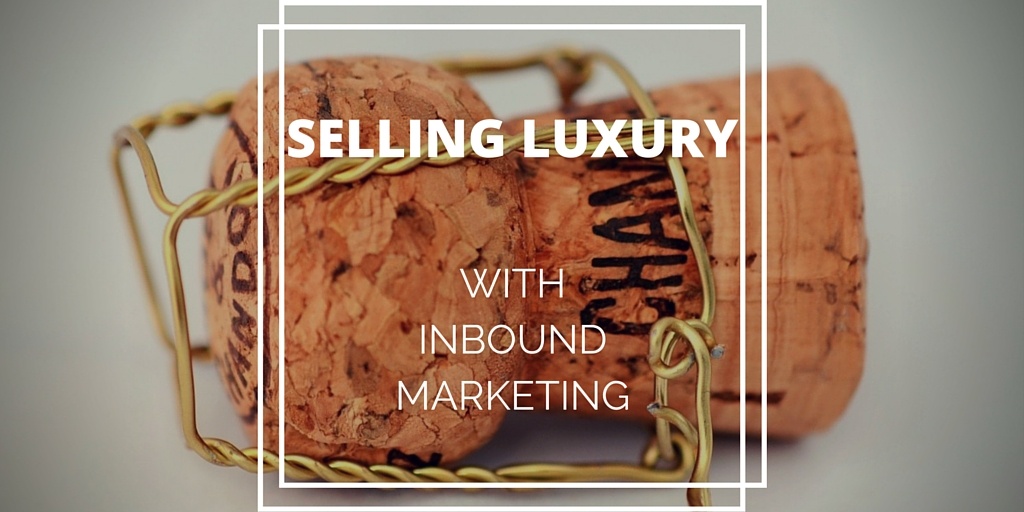Selling Luxury With Inbound Marketing

For years, luxury brands have been leveraging billboards, advertisements in magazines and television and radio commercials to reach an audience that resonates with their products and services. While those media still hold stock, each of them requires the customer to find you, to cross paths with your brand and, hopefully, find the message compelling enough to consider a purchase.
Inbound marketing does exactly the opposite. It may not be a term your marketing team is familiar with, but it’s something that could be a key factor in changing the way you promote your luxury brand.
Take Time to Understand Your Audience
Every product on the market has a target audience, and luxury brands are no different. The first step in creating a comprehensive inbound campaign is defining your marketing personas.
Marketing personas are a detailed looked at your ideal customer. Marketing personas take a look at your best customers and tailor each message you create to someone similar. Your business may have one or two personas, or over 20, depending on what you’re selling.
You should ask these questions about your personas:
- Roles: What are their jobs? Who do they report to?
- Goals: What do they want to get out of your product or service?
- Challenges: What would stop them from using your product or service?
- Watering holes: Where do they hang out? Where do they go for valuable information?
- Background: Where are they from? What is their education?
- Shopping trends: How do they interact with vendors? Where do they go to research products? The more questions you ask to delve into the mind of your ideal customer, the better your inbound campaign will be.
Content, Content, Content!
The main idea behind inbound marketing is bringing the customer to you. Everyday, billions of searches are performed across Google. By having an authoritative content plan, you have a better chance of your prospective buyer finding you among the clutter.
Blogs are a great place to start. If you have a website for your product, a blog can be a platform to answer your personas’ questions. But remember, the goal of content creation is to inform your buyers at every stage in the funnel, not push them. Blogs are a great place to promote top-level information for someone in the early stages of the buyer’s journey.
The next step is creating e-books and more detailed content for someone who is getting serious about buying. You can place these guides behind a form to capture information about the lead. Finally, create “bottom of the funnel” content to convince your buyers they should become customers. This content can include webinars, walk-throughs and case studies.
## Personalize Your Way to the Top
So you have your personas built out, and your content is creating a stir on the web. What’s next?
Those “middle of the funnel” offers have, hopefully, been driving people to give away basic information such as names and email addresses. Now it’s time to put that information to work.
Segment your leads and create email nurture sequences to drive them back to your site and keep your brand at the forefront of their minds. There are plenty of email tools to help you create customized email campaigns that fire out when buyers are in certain stages of your marketing funnel.
When you have a sophisticated campaign set up, you can have multiple email sequences running. This means consumers are connecting with your brand, and all at the click of a button – no extra work required.
Divide and Conquer
You can combine traditional marketing tactics with inbound techniques to drive brand recognition and conversions to your luxury product. If you’ve built a beautiful landing page for a piece of content you know connects well with customers, advertising through more traditional streams isn’t a bad thing at all.
Inbound marketing takes dedication. But strong content, personalization and a fundamental look at what your buyers value will always lead to success.
What are some of your marketing challenges when selling luxury goods? Share below.
